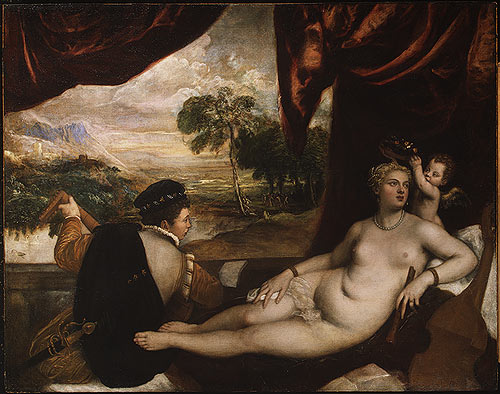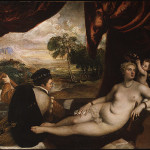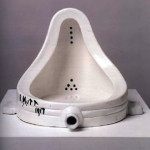So I'm looking at Titian's Venus and the Lute Player when I overhear a discussion being led by a teacher and some students:
Teacher: "What do you think this painting is about?"
Student A: "It seems to be about whether beauty is better apprehended through sight or through sound."
Student B: "I think it's just another example of pre-19th century art that assumes one single point of view of what beauty even can be. I mean seriously, another nude white woman as the object of beauty..."
Student A: "I think you're confusing social commentary with art. The piece is not supposed to be social commentary, it's supposed to be beautiful. You can't just substitute aesthetic beauty with irony and call it art the way a lot of artists try."
Student B: "That may be true, but all standards of judgment are based at least in part in some kind of cultural bias. Beauty maybe the most biased of all and so without framing Titian's biases we risk marginalizing and silencing virtually everyone else's concept of beauty."
Student A: "But it is too easy to just deconstruct the piece that way. Anyone who isn't smart enough to build a building can spend their whole life simply burning them down. After deconstruction, there needs to be re-construction."
Teacher: "So what can we do now to acknowledge the insight that all judgments are relative and context-dependant but still be able to move forward and appreciate this work of art?"
Student B: "Why don't we just use relative terms where the standards of judgment are not unilaterally applied as they were in the past, but explicitly stated and acknowledged to be immersed in the culture in which they arise."
Student A: "So we have an integral mode of criticism that includes context as an essential part of any judgment. Thus we can judge a piece based on the notion of beauty that exists in our culture. This allows me to make the judgment that Titian's "Venus and the Lute Player" is more aesthetically beautiful than Duchamp's "Fountain". I can even go on to say that it is probably as provocative and controversial about notions of beauty because it does pose the question: Which is more beautiful, visual art or music?."
Student B: "That sounds fine as long as everyone understands that the hierarchy you just created is inherently value free and that it is context driven. It has to be acknowledged that you are working with a continuum of sliding judgments and sliding contexts."
Teacher: "Exactly, then we can move forward by understanding that we are no longer evaluating work based on one single standard, but there are some standards that have to be framed before the discussion can really begin."
- Tiziano “Titian” Vecelli, Venus and the Lute Player, oil on canvas, 1565–70.
- Marcel Duchamp, Fountain, 1917
Titian image found here.
Duchamp image found here.






